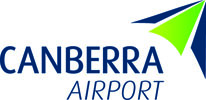Lockheed Hudson Mark IV Bomber - Canberra Airport
Our fully restored Lockheed Hudson Mark IV Bomber is now on display inside Canberra Airport near the Virgin Australia check-in counter.
The Lockheed Hudson: RAAF Workhorse
The Lockheed Hudson was one of the most versatile aircraft used by the Allied air forces in the early part of the Second World& War. It filled a desperate need for a long-range patrol/bomber and reconnaissance aircraft. Based on a civilian airliner, it made its first flight in 1938, modified to include a bomb bay, positions for an operational crew of five, and defensive armament.
From 1939 the Royal Australian Air Force took delivery of 247 Hudsons. These were used in a variety of roles across the Pacific, North African, and Mediterranean theatres, including bombing and reconnaissance operations, air-to-sea rescue, transport, and convoy protection. The Hudson was one of the true “work horses” of the RAAF.
This aircraft, A16-105, arrived in Australia in early December 1941 and was used to train RAAF aircrews. Between December 1942 and January 1943 it saw operational service in Papua and New Guinea, carrying out supply flights during the Allied advance on Buna on Papua’s north coast.
Restoration of Lockheed Hudson A16-105
After the Second World War, Hudson A16-105 was stripped of its military fittings and flown as a photographic survey aircraft.
Flight controls were re-routed, the nose was swapped for one without windows, and holes were cut in the bomb bay doors for camera equipment. It completed its last flight in 1998, and was purchased by the Australian War Memorial in 2001.
The Memorial set about restoring the aircraft to its wartime configuration of December 1942. The project took 48 months to complete, and involved the fabrication of more than 5,800 parts and tools, extensive research on the colour scheme and internal fitout, the sourcing of replacement parts and spares through the aviation heritage network, and the reconditioning of the airframe. Reference material was limited, so the complete blueprint catalogue, acquired from the National Air and Space Museum in Washington DC, became the Memorial’s planning bible.
Read more about the restoration process in a series of blogs written by the conservation team.
| Proudly supported by: |  |
 |